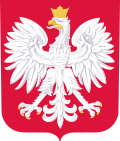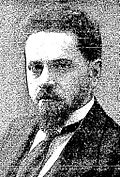Ethnoreligious voting analysis
According to Kopstein and Wittenberg, 39% of the majority Catholic population voted for right-wing parties, 29% for non-revolutionary left-wing parties and 25% for centrist parties. The other ethnoreligious groups, including Uniates, Jews and Orthodox Christians voted largely for parties representing minority groups. [4]
Some regional differences were observed; in western Poland, 9% of the Catholic vote went to minority interest parties, which has been attributed in part to German Catholic voting, but in the east, only 1% did. Ethnic Polish support for the right wing was stronger in the east of the country, where 40% voted for right-wing parties, as opposed to the south where 16% did. No detectable regional variation existed among Jews. [5] The lack of support for the center and right among the major minorities (Jews, Ukrainians and Belarusians) was attributed to ethnic polarisation that was exacerbated by discrimination and chauvinism from Polish officials. [6] Despite the success of minority parties, parties describing themselves as "Polish" refused to form a government with minority parties, and there was not one non-ethnic Polish cabinet member in the interwar period, though interethnic cooperation could still be seen in Ukrainian and Belarusian support for the Sikorski government. [5]
| Estimates of voting patterns by ethnoreligious groups |
|---|
| Religion | Communists | Nonrevolutionary left | Minority interest parties | Center | Right-wing | Overall share (1921 census) |
|---|
| Catholic | 2% | 29% | 4% | 25% | 39% | 64% |
| Uniate | 3% | 2% | 77% | 1% | 5% | 12% |
| Orthodox Christian | 8% | 37% | 66% | 1% | 1% | 10% |
| Jewish | 4% | 18% | 65% | 2% | 4% | 11% |
| Overall share (1921 census) | 2% | 16% | 24% | 25% | 34% | |
This page is based on this
Wikipedia article Text is available under the
CC BY-SA 4.0 license; additional terms may apply.
Images, videos and audio are available under their respective licenses.











